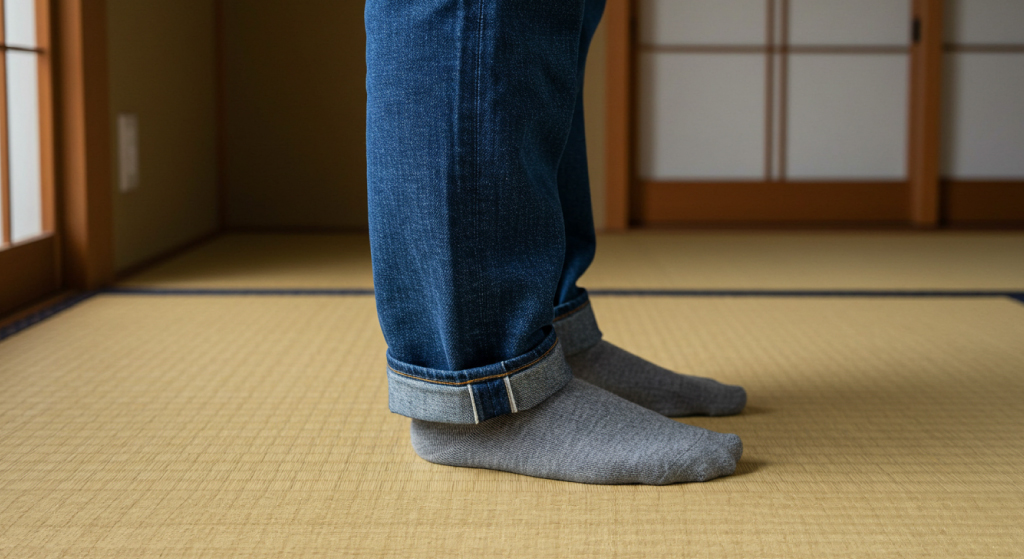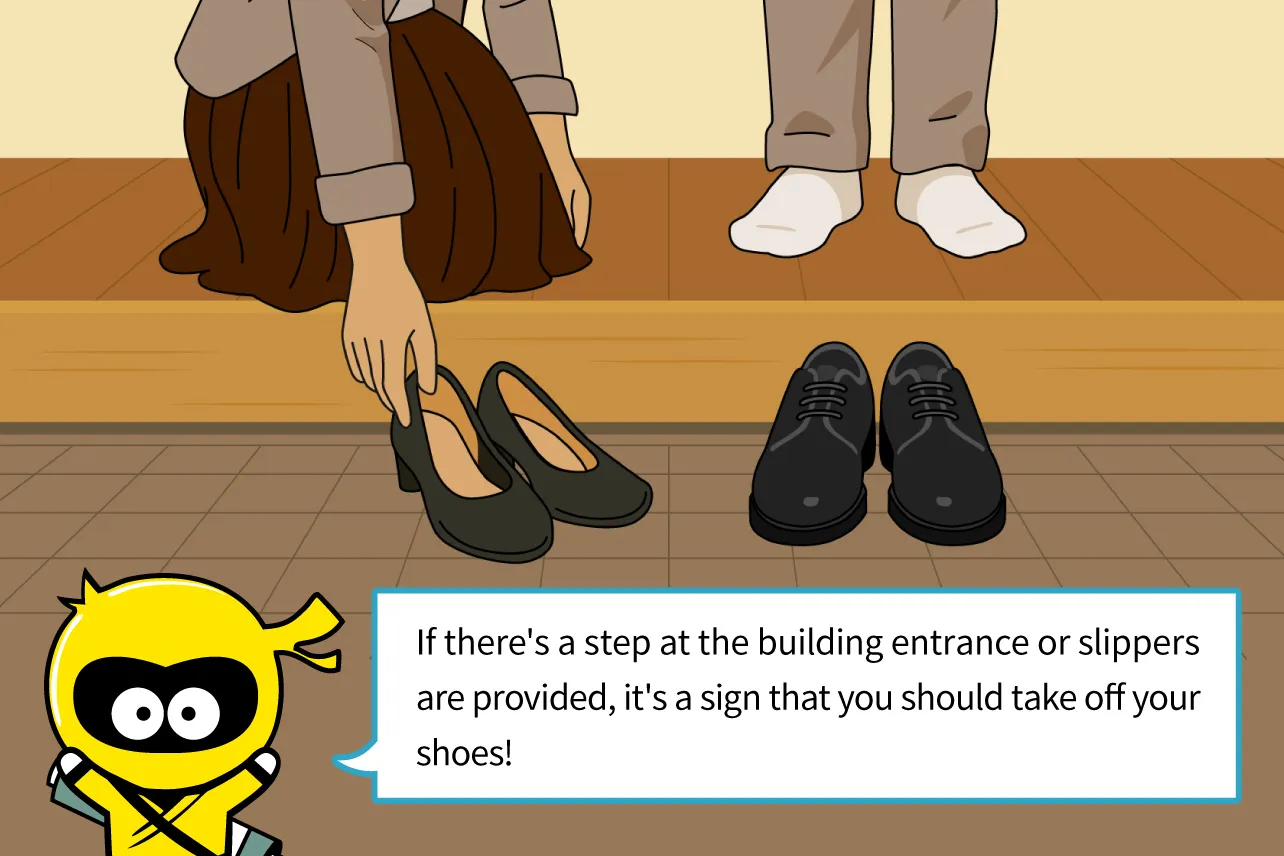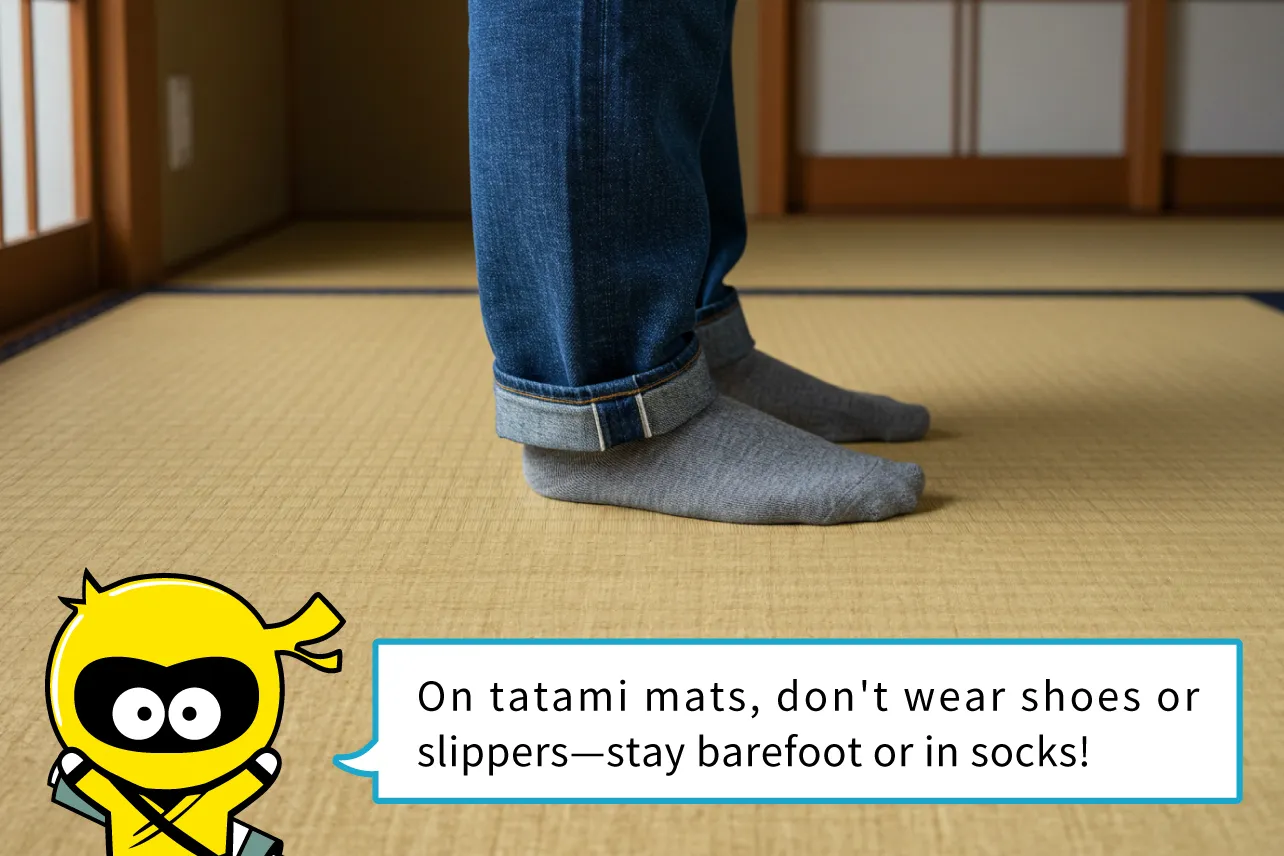

Where Do You Need to Take Off Your Shoes in Japan? Basic Rules Explained


In Japan, it’s customary to take off your shoes when entering indoor spaces. This is especially the case at ryokan (traditional inns), private homes, Japanese restaurants, and temples. A step at the entrance or the presence of slippers often signals that you should remove your shoes. By understanding this cultural norm in advance, foreign visitors can behave respectfully and avoid any faux pas.
Why Do People Take Off Their Shoes at the Entrance in Japan?
Japanese culture values the boundary between “outside” and “inside.” Removing shoes at the entrance is a long-standing tradition aimed at keeping living spaces clean. This practice is also related to the Japanese lifestyle of sitting directly on tatami or wooden floors, and it reflects the country’s unique sense of cleanliness and respect.
Should You Take Off Your Shoes When Checking Into a Ryokan?
At Japanese ryokan, guests are expected to remove their shoes at the entrance. If you see slippers provided, that’s a clear sign to take your shoes off. In tatami-mat rooms, you should also remove the slippers. This gesture shows respect for the relaxing and serene environment that ryokan aim to offer.
When and How to Take Off Your Shoes When Visiting a Japanese Home
When visiting a Japanese home, it’s customary to take off your shoes at the entrance. Even if you are invited in, it’s polite to pause and wait for instructions. After taking off your shoes, place them neatly facing the door. In a culture where people often sit directly on the floor, maintaining cleanliness is very important. Japanese hosts often notice these small gestures, so be mindful.
How to Know If You Should Take Off Your Shoes at a Japanese Restaurant
In Japanese restaurants, you are usually required to take off your shoes if there are tatami floors or private rooms. Check if there are slippers at the entrance or if the flooring is traditional. In restaurants with Western-style tables and chairs, keeping your shoes on is generally acceptable. If you’re unsure, don’t hesitate to ask the staff.
How to Read No-Shoes Signs and What to Look For
Signs like “土足厳禁” or “Please take off your shoes” indicate that shoes must be removed. These are typically displayed at entrances or clearly visible locations. Many signs are now written in both Japanese and English. Even if there is no sign, the presence of slippers or a raised step can help you determine whether to take off your shoes.
Does Tatami Mean You Must Take Off Your Shoes? Basic Washitsu Etiquette


In tatami rooms, it’s proper etiquette to remove not only your shoes but also your slippers. Tatami mats are designed to be walked on barefoot or in socks, and wearing slippers can damage them. These rooms are considered clean and respectful spaces, so extra care is expected, especially in ryokan or traditional restaurants.
Shoe Etiquette Mistakes Foreign Tourists Often Make in Japan
Common mistakes include not removing shoes at certain restaurants or shrines, or entering tatami rooms or restrooms while still wearing slippers. In public baths and ryokan, shoe and slipper etiquette is taken seriously, so knowing when and where to switch footwear is important for avoiding misunderstandings.
Solutions: How to Handle Common Shoe Etiquette Mistakes
-
Check if you need to take off your shoes before entering
Look for signs at the entrance such as “Please take off your shoes” or “Slippers available.” If you’re unsure, simply ask the staff, “Should I take off my shoes?” -
Understand the different types of slippers
In many places, there are special slippers for toilets, separate from regular shared slippers. In rooms with tatami mats, it’s proper etiquette to remove even your slippers. -
Research Japanese customs in advance
Before your trip, search for keywords like “shoe etiquette in Japan” or “onsen shoe rules” to better understand what’s expected in different situations. -
When in doubt, observe those around you
Watch how the Japanese people around you behave and follow their lead—it’s usually the safest approach.



